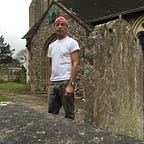Beirut – a museological diagnosis
All my schoolboy peers knew in general inorganic chemistry the decomposition stoichiometry of ammonium nitrate was sinister, swift, lethal, unpredictable…
As an early-teen I once attempted concocting nitroglycerin in our school lab visor-less when the iced slurry leapt 4m into the air painting the lab ceiling. Happily scholars are more closely supervised and clad for safety.
A country’s flavour of museology gives a good indication of the national psyche: acquisitive or affirmative.
What attracts my attention in the Beirut incident is the socio-genomic neuroscience of the choices and attendant six-year reported abnegation of a lethal risk antecedent to the disaster.
The region has perhaps the longest unbroken genomic continuity from the Middle Bronze Age, (Sidon Exploration Doumet-Serhal).
Favoured neurocognitive options are influenced by genomic makeup. The six-year attitude to warehouse-12's perilous stash appears homogeneous among key players. Even post-incident speculated scenarios attributed to responsible persons mirror a similar character.
Many aspects of governance over the last two decades in particular may have their loci in the genomic neurocognitive legacy of the region.
Perhaps exploring this a little more deeper would pay off and help address spastic hazardous enterprise.
Dr Hartwig Fischer’s encouraging endurance and innovation for precarious times (Hoggett British Museum): museology contributing to diagnosis I feel sure.
